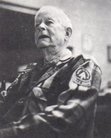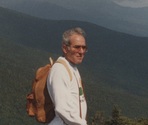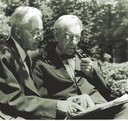2014 Class

A. Rufus Morgan. Rev. Morgan was born in 1885 in western North Carolina. He went to college and seminary, then served many churches as an Episcopal minister, focusing his ministry on the less fortunate. He also made time for one of his great loves, the then-new Appalachian Trail in the mountains of North Carolina. Rev. Morgan spent a total of 43 years constructing and maintaining the Trail and inspiring others to do so. He began by developing and maintaining 55 miles of the AT in North Carolina from Bly Gap on the Georgia border to Wesser Bald. Early on, he was known as a one-man hiking club, clearing and tending his portion of the AT and supporting the ATC. Later on, he founded the Nantahala Hiking Club.

Charles R. “Chuck” Rinaldi played a critical role in preserving the A.T. by acquiring land for its corridor. He served as chief of the Appalachian Trail Land Acquisition Office of the National Park Service, beginning with the establishment of this program in 1978. Under his leadership, the office began to create maps of the trail corridor and search the titles on the privately owned tracts along the Trail. Eventually more than 1,000 additional tracts were brought into the inventory. The goal was to establish a fully protected off road Trail in as natural and remote a setting as possible. Mr. Rinaldi often had the very thankless task of attempting to balance the competing interests of landowners and Trail advocates. The wonder is that he so often succeeded in reaching a result satisfactory to these interests.

Clarence S. Stein played an important role in helping Benton MacKaye turn his dream into reality. MacKaye and Stein met initially in July, 1921, along with Charles Harris Whitaker, editor of the Journal of the American Institute of Architects. After hearing MacKaye’s proposal for an Appalachian Trail, Stein encouraged MacKaye to develop his ideas further, into an article suitable for publication. He then encouraged Whitaker to publish MacKaye’s seminal article in the AIA Journal. This article was, of course, the spark that started the whole movement that led directly to the Appalachian Trail. After the article was published, Stein continued to push the A.T. concept among conservationists in the Northeast, getting other pioneers like Major William Welch involved.

Pamela Underhill, preserved and protected the Trail in a variety of capacities with the National Park Service from 1979 to 2013. In 1995, she was selected to serve as park manager (a.k.a. superintendent). Throughout her career, but especially in her capacity as park manager, Ms. Underhill has displayed an unswerving devotion to the A.T., to ATC, to volunteer-based stewardship, and to the A.T. cooperative management system. She has been a strong and articulate advocate for land conservation along the A.T., even at some risk to her own professional career. She was equally forceful in defending and supporting the unique partnership that exists among ATPO, ATC, the trail-maintaining clubs, and Appalachian Trail volunteers—within her own agency, with other federal and state agencies, and with the public at large.
The 2014 Class was honored at the Fourth Appalachian Trail Hall of Fame Banquet, on June 6, 2014. HERE is a gallery of photos from the Banquet.
